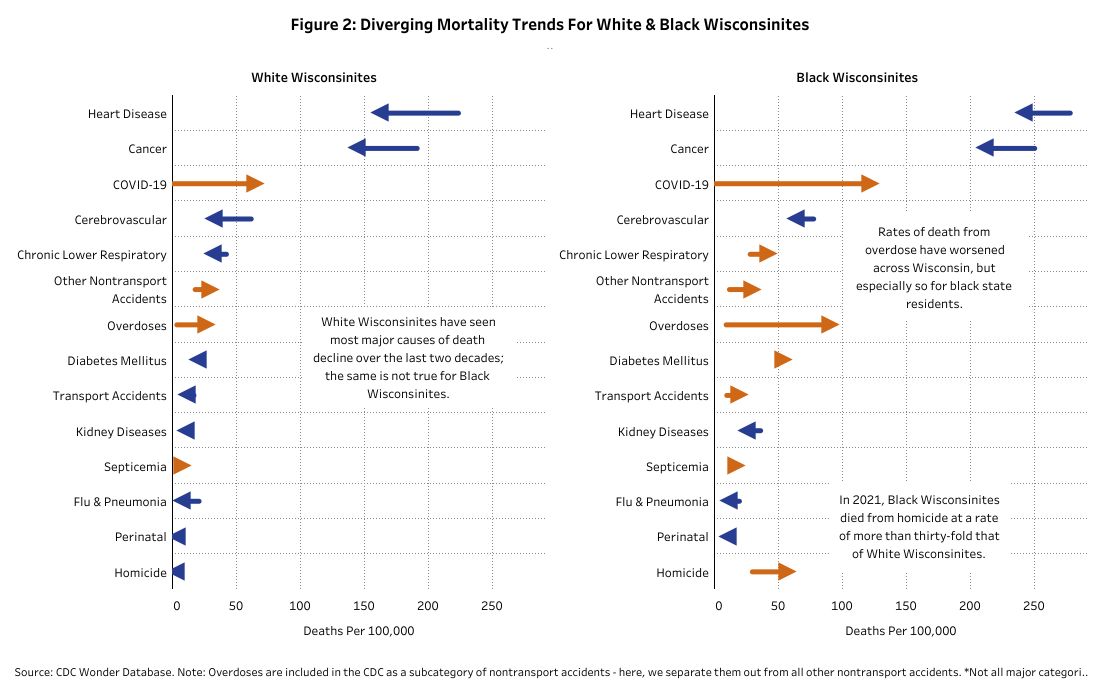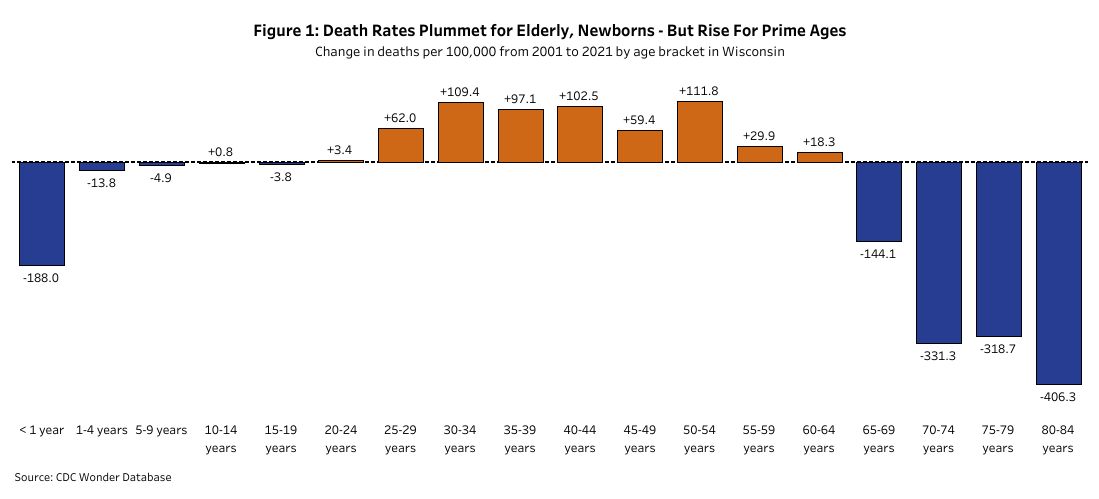WISCONSIN — A new report from Wisconsin Policy Forum revealed some dark realities for death rates in Wisconsin.
More people are dying in the “prime of life,” or between the ages of 20 and 40. This trend isn’t unique to the Badger State. It’s something that’s being seen nationwide.
The report also found that in 2021, the homicide mortality rate for Black Wisconsinites far exceeded the nationwide rate for Black Americans. Specifically, Black, non-Hispanic Wisconsinites were nearly 32 times more likely to die from homicide than their white peers; however, nationwide, Black, non-Hispanic Americans were only 10 times more likely to die from homicide than their white peers.
While officials said they cannot pinpoint a singular cause for these numbers, they said COVID-19, as well as an increase in overdoses and homicides in general, may have played a role.
Racial disparities in death
Overdoses and homicides are two of the most prominent causes of death across the country, according to the Wisconsin Policy Forum report.
Death rates associated with overdoses and homicides increased in Black, non-hispanic Wisconsin communities between the years 2001 and 2021.
The overdose death rate for Black Wisconsinites increased nine-fold in this time period; comparably, that increase was only six-fold nationwide.

Over those two decades, homicide mortality rates for Blacks increased in Wisconsin by 93.9%. During that same time, the homicide mortality rates for Blacks nationwide increased by 56%.
In 2021, there was an increase in homicide and violent crime within Milwaukee and nationwide, which had a disproportionate impact on Black residents.
Wisconsin has a much larger white-Black disparity than the U.S. as a whole. In the Badger State, the rate of homicide deaths for white Wisconsinites is much lower than for all white Americans; the opposite is true for Black citizens in Wisconsin. This widens the gap.
Young adults face higher death rate
Death rates for those between the ages of 25 and 44 increased sharply from 2001 to 2021, according to the report. There were 1,100 more young adult deaths in 2021 than in 2001.
The largest percentage increase was among Wisconsinites ages 30-34: Their death rate rose by 137% over the two decades.
In 2021, Wisconsinites ages 30-34 were more likely to die than Wisconsinites ages 40-44.
Wisconsin also outpaced national increases for death in this age group.
One of the leading factors for this increase, according to the Wisconsin Policy Forum, appears to be correlated to the rise in overdose-related deaths, which have accounted for well over half of the mortality rate increase for Wisconsinites ages 20-49.
COVID-19 played another, yet smaller role, matching and exceeding death rates from other leading killers such as cancer and heart disease.

Promising shifts
Although rates among young adults and Black Wisconsinites are rising, there is some good news about death rates in the state.
Death rates for those over age 65 have decreased over the last two decades despite a Great Recession, the rise of an opioid epidemic and COVID-19. This has been true nationwide and statewide.
Wisconsin, when compared to national numbers, has seen a greater decline in older age death rates.
Specifically, the mortality rate per 100,000 Wisconsin residents ages 65-69 decreased by 8.4% from 2001 to 2021. It declined by 12.% for those 70-74, and fell by 7.5% for those ages 75-79.
Wisconsin Policy Forum officials attributed this decline to lower rates of heart disease, cancer and strokes, which are frequent health issues that affect older individuals.
Older age groups were not the only group to see a decrease in these causes of death. Across the board, Wisconsinites are dying less from cancer, heart disease and strokes.
Cancer death rates decreased by 24.4%, heart disease deaths decreased by 26.7% and cerebrovascular deaths, the majority of which were strokes, dropped by 45.4% from 2001 to 2021.
Long-term data also revealed that COVID-19 did not increase mortality rates among older age groups enough to offset the general decline in death.
On the other end of the spectrum, infant mortality rates, or death among those under age 1, declined significantly in Wisconsin and across the nation from 2001-2021. However, Wisconsin Policy Forum noted that large racial disparities still exist in these numbers.
Long-term effects
Wisconsin Policy Forum officials said these numbers reflect trends across the U.S. Some of these increases could lead to long-term effects.
The loss of younger life, in particular, could create what officials call a “ripple effect,” where children are left behind as people die earlier. Officials said this could extend the impact to another generation.
There is also an economic cost to this loss of life. Wisconsin Policy Forum officials said Wisconsin cannot meet the demand for working age people. With rising death rates among young people, this could impact the issue further.
While COVID-19 death rates have slowed, overdoses are another story. In 2021, over 100,000 Americans lost their lives to drug overdoses, setting a new record.
“No easy answers exist to this problem,” said officials in the report.
Wisconsin Policy Forum officials created their report using data from Centers for Disease Control and Prevention’s WONDER database. It pulled data from U.S. death certificates, which includes underlying causes of death and demographic information.
You can read the full report, here.









